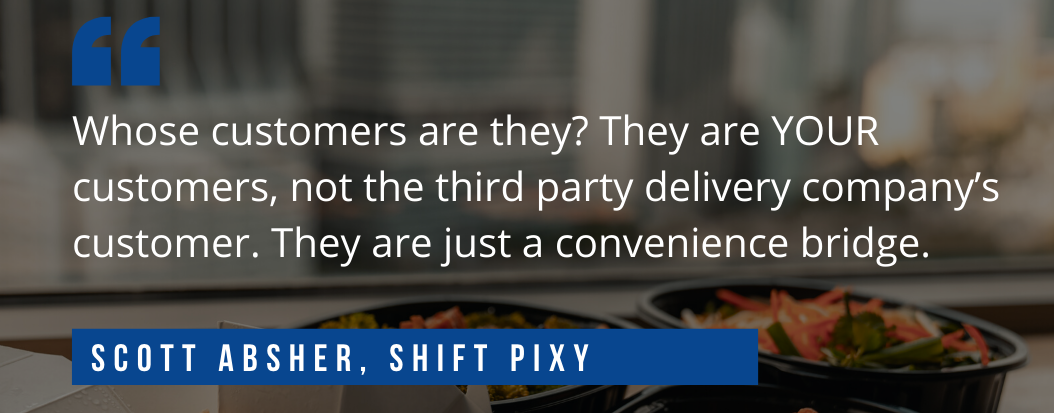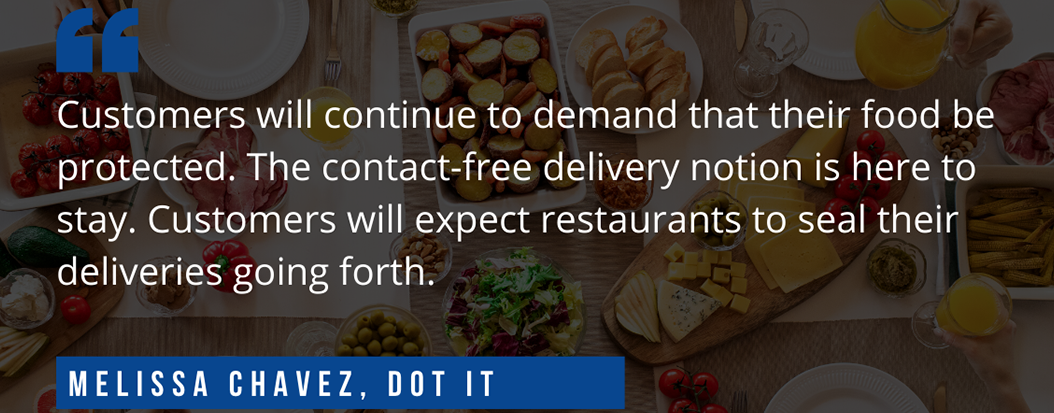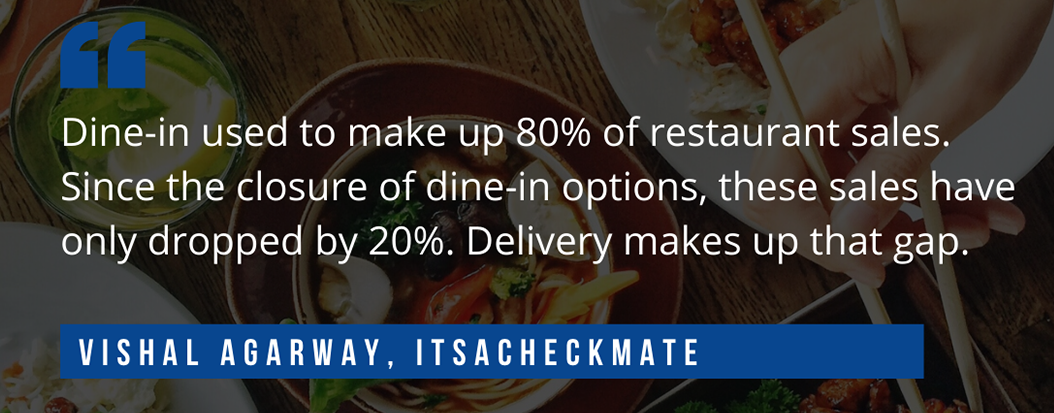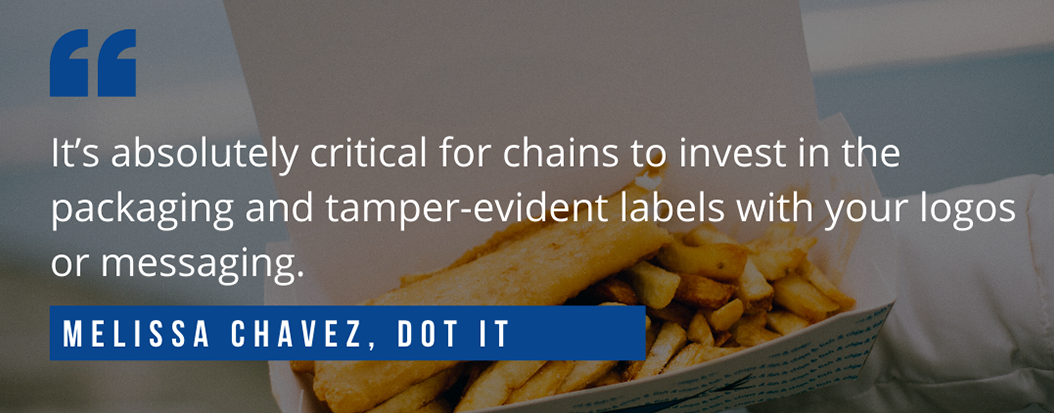5 Takeaways from Restaurant Recovery Week’s Off-Premises as the New Normal
Food on Demand hosted the first webinar to kick off Restaurant Recovery Week this week. It featured three panelists: Vishal Agarwal of Itsa Checkmate, Scott Absher of ShiftPixy, and Melissa Chavez of Dot It. In case you missed their webinar entitled Off-Premises as the New Normal, we’ve compiled the top five takeaways restaurants need to know about off-premises as the new normal.
#1. Your Restaurant’s Relationship with Third-Party Delivery Services
Third-party delivery services were already trending pre-quarantine, and they’ve continued to grow in popularity. Does that mean your restaurant has to pair up with them, or can you take the native delivery approach?
The answer is yes to both! Expert Scott Absher gives his insight claiming, “food delivery apps like GrubHub and DoorDash have created new habits.” These apps have opened food delivery habits in many consumer types that would not have used delivery so heavily previously. The pandemic also opened the delivery market into formerly hard-to-reach audience types such as baby boomers noted Agarwal.
With regulations on dine-in still active during the pandemic, restaurants have shifted to off-premises models to cater to delivery, curbside, and pickup. Restaurants have quickly scrambled to accommodate this new type of consumer and have been forced into native delivery or a third-party delivery partnership. But which is preferable? Native delivery, third-party, or somewhere in between? The experts all agreed it depends on the restaurant’s resources, operations, and infrastructure. All approaches have a list of pros and cons behind them.
That is not to say that third-party delivery systems should own your business, however. Absher says “whose customers are they? They are YOUR customers, not the third-party delivery company’s customers. They are just a convenience bridge.” Keep track of data for reporting purposes and remember that the delivery partner is a reflection your business.

To make it a little easier, here are some delivery tips from the webinar:
- Markup your prices on third-party apps to ensure you keep revenue
- Slim down your menu if necessary, to accommodate quality deliveries
- Seal your packaging to protect your food from contaminants and hungry drivers
- Create a quality POS system so customers can pay online
- Go contactless if possible
#2. A New Emphasis on Food Safety Practices
While food safety has always been important, it’s particularly top-of-mind today. That means people want reassurance their food is handled safely from preparation all the way through delivery. What’s more is that it’s no longer an assumption – restaurants need to advertise their safe food handling practices to keep their customers feeling safe.
During the webinar, Chavez says “Customers will continue to demand that their food be protected. The contact-free delivery notion is here to stay. Customers will expect restaurants to seal their deliveries going forward.” Customers are adhering to social distancing during this time, so the less face-to-face interaction with delivery drivers, the better.

This trend will continue into the future once social distance measures are lifted. As Absher said, “the ick factor is residual” and consumers will not go from quarantining to immediately dining in restaurants. They will continue to demand protective measures from their homes.
Contact-free deliveries should be set up now to continue prosperously into the future. These deliveries should be sealed properly to maintain the integrity of the food, and customers should be enabled to pay online. Creating a good contact-free infrastructure now means a more seamless transition into life post-quarantine.
#3. Differentiating Your Restaurant in the Market
Like previously noted, the delivery market has expanded. Once dine-in options began closing, many restaurants prepared to take huge losses. However, Agarwal comments on the light lost revenue, attributing the minimal loss to delivery services – “Dine-in used to make up 80% of restaurant sales. Since the closure of dine-in options, these sales have only dropped by 20%. Delivery makes up that gap.”

It is true that many restaurants have seen a huge increase in demand for delivery – in fact, one of the panelists commented on the restaurants that have begun reopening despite the maintained closed dining rooms have done so because of the high delivery demand. However, the restaurant industry is still plenty saturated, and that means restaurants need to stand out amongst the delivery options.
Differentiating your restaurant in the market can be difficult, but our panelists encourage you to get creative and make it fun. Create promotions to increase the dollar amount of individual sales. Take advantage of alcohol delivery laws relaxing and add drink options to your menu.
#4. The Importance of Off-Premises Branding
Consumers are not engaging with your brick and mortar anymore. They are relying on other touchpoints with your brand like your packaging and labeling. That means that branding is “absolutely critical for chains,” according to Chavez. “[You need] to invest in the packaging and tamper-evident labels with your logos or messaging” so that customers will recognize your brand even if it’s coming out of a DoorDash car.

#5. The Packaging Supply Chain
Chavez comments on the packaging supply chain saying “paper and packaging are far more important in today’s restaurant, especially to those who have never done delivery or takeout.” This pairs with the additional importance of off-premises branding.
Because the packaging supply chain has seen an increase in demand from restaurants who never got into delivery before now, it can be slow moving. The experts say to expect longer lead times for new branded packaging and seek methods in the meantime to keep your brand present. Vishal recommends finding a 1”x3” label to seal your bags or use as receipt stickers with your brand on them as you wait for branded packaging to come in.
Restaurant Recovery Week extends through the end of this week with more webinars from industry experts. To watch the webinar Off-Premises as the New Normal, click here.
